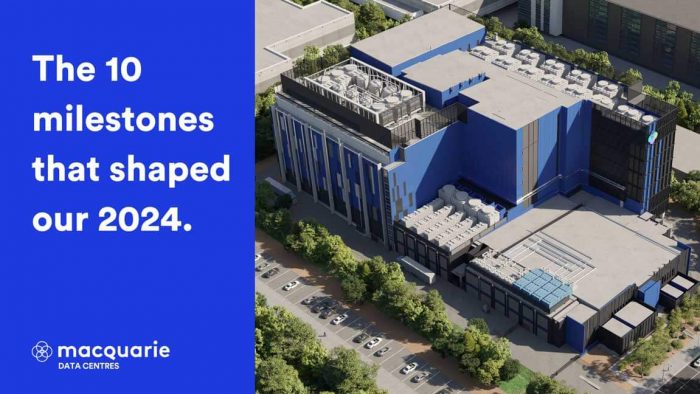What Is Data Centre Infrastructure Management?

We are global citizens, living in a truly globalised world driven by global commerce. And a term that consistently emerges in conversations around contemporary data centres is data centre infrastructure management, often referred to as DCIM. But what is data centre infrastructure management? Do businesses really need it in order to scale efficiently? In the following discussion, we’ll discuss more about the significance of DCIM, exploring its intricacies and underlining its importance in modern business operations.
Unpacking the concept of DCIM.
The meaning of DCIM, or data centre infrastructure management, pertains to the integrated solutions and practices employed to ensure optimal performance, efficiency and functionality within a data centre. These solutions provide administrators with a holistic view of both IT-related components and the supporting infrastructure, such as cooling systems and power supply.
DCIM combines traditional data centre management with the precision of modern software, allowing for real-time monitoring and management of all interdependent systems across IT and facility infrastructures. It bridges the informational gap between these traditionally siloed teams, ensuring that everyone has access to the same set of accurate, up-to-date data.
Utilising the benefits of DCIM.
Beyond understanding the meaning of DCIM, it is also essential to recognise its significance in the smooth operation of a data centre. With the increasing complexity and scale of data centre operations, having an integrated management system becomes essential. DCIM offers:
Enhanced efficiency.
Navigating intricate data centres requires clarity, and DCIM solutions provide just that. By consolidating all operational data into one accessible place, decision-making becomes straightforward and timely. With this clear oversight, resource utilisation improves, leading to better efficiency and reduced operational costs.
Improved capacity planning.
As businesses scale, so do their data needs. With DCIM, firms gain insights into how their resources are currently used. This knowledge allows for anticipatory planning. By understanding present consumption, businesses can foresee and adapt to future demands, ensuring they’re always a step ahead.
Reduced downtime.
In our fast-paced digital world, downtime is a costly misstep. DCIM’s real-time monitoring serves as an early alert system, pinpointing issues before they grow problematic. By identifying and addressing these snags promptly, data centre reliability is bolstered, reducing potential downtime and its associated costs.
Environmentally-friendly operations.
As environmental consciousness grows, there’s a push for businesses to adopt greener practices. Data centres, which can be energy-intensive, aren’t exempt from this. Modern DCIM solutions advocate for greener operations by monitoring energy use and recommending adjustments. By optimising energy consumption, data centres can significantly reduce their environmental impact.
DCIM’s role in data management
Data centres have transitioned from mere storage houses to complex hubs of information. DCIM has emerged as the Swiss Army knife of data centre management, providing a suite of functions:
A holistic perspective.
Data centres represent significant financial investments intricately woven with complex technical setups. DCIM faces these complexities head-on, intricately mapping the relationship between the equipment and the associated financial outlays. This comprehensive view provides stakeholders with invaluable insights, shedding light on the cost-effectiveness of each component and aiding in strategic financial decision-making.
Adapting with precision.
The dynamic world of business constantly evolves, and the infrastructure supporting it must be equally adaptable. DCIM stands sentinel, closely monitoring these shifts and continually assessing the demands on the data centre. Its capacity planning capabilities ensure resources are always optimally balanced to handle current needs without excessive overheads. Additionally, the dynamic change management features within DCIM allow data centres to recalibrate swiftly in response to business direction shifts.
Strategic resource alignment.
The effectiveness of a data centre hinges on aligning its resources with overarching business objectives. DCIM, as a strategic solution, offers a detailed view of every asset, from computational power to storage. With this information, businesses can position resources to achieve the highest returns, optimising every facet of the data centre for precision and purpose.
Blueprinting the future.
The future is full of uncertainties, especially in a tech-driven world where trends can rapidly shift. DCIM provides clarity amidst this unpredictability. Its predictive modelling capabilities allow businesses to anticipate and prepare for potential challenges and opportunities. It’s about being proactive and ensuring the data centre remains agile and ready to support the evolving needs of the business.
Visualising the broader landscape with DCIM.
When talking about DCIM, keep in mind that its importance extends beyond simple operational management. Colocation data centres offer an insightful example. These centres allow businesses to lease space for their servers and other hardware, providing advanced infrastructure without the heavy investment typically associated with it.
In contrast, hyperscale data centres are tailored for major industry entities. These are structured to quickly expand to accommodate the extensive needs of services like cloud storage. Their complexity and breadth make a management tool like DCIM essential.
Australia’s focus on data security and compliance has led to the rise of dedicated data centres in areas such as Sydney. More than just storage facilities, these centres are committed to ensuring data is managed according to strict regulations. With the right compliance certifications, businesses can be assured of the safety and integrity of their data.
Macquarie Data Centres offers connectivity and beyond.
In today’s digital era, data centres are at the nexus of integrating on-premises infrastructure with cloud services. Seamless connectivity to the cloud has become paramount, enabling businesses to be agile, scalable and data-driven. This cloud connectivity ensures that data is not only securely stored but can also be quickly accessed, analysed and effectively utilised across hybrid environments.
Data centre infrastructure management (DCIM) is pivotal in guiding businesses through these intricate connectivity challenges, ensuring their data centre operations are optimised for both on-site and cloud integrations. As businesses evaluate their data centre strategies — be it colocation, hyperscale or specialised services in regions like Sydney — understanding DCIM’s role is only one half of the equation.
Businesses must also source DCIM leaders to support their transformation. Macquarie Data Centres is your trusted resource for flexible, scalable and secure DCIM solutions. Our in-house team of DCIM masters design, build and deploy all our DCIM solutions, ensuring a robust infrastructure and hi-tech excellence you can count on.
By collaborating with Macquarie Data Centres, organisations are well-positioned for robust cloud connectivity, coupled with the best in data infrastructure and management. If you’ve got more questions about DCIM or if you want to learn more about our data centres, feel free to reach out, so we can help you better.
Read more about our colocation services in Sydney and Canberra.
Read more about our data centres in Sydney, Macquarie Park, and Canberra.




